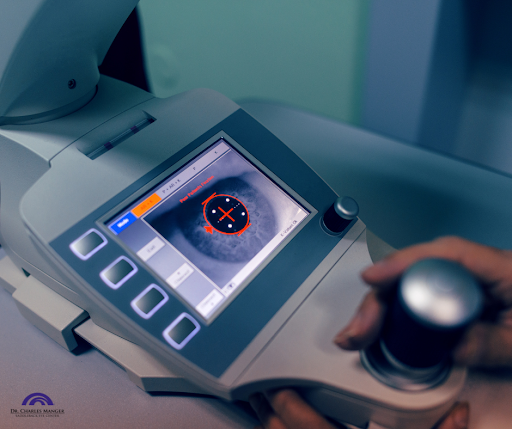If you’re dealing with blurred vision, relying on glasses, or facing contact lens discomfort, you might be considering vision correction surgery to free yourself from the challenges. PRK and LASIK are the most common and effective options, and each has a unique approach to enhancing vision, which offers two different solutions.
By learning the difference between a comprehensive PRK method and complete LASIK eye surgery, you can discover which method best meets your needs.
Understanding the Difference Between PRK and LASIK
PRK and LASIK use laser technology to correct vision, but their techniques and recovery processes vary. These distinctions impact which procedure better suits individual vision needs and eye conditions.
PRK: Procedure, Results, Qualification
The PRK procedure reshapes the cornea by directly treating the corneal surface. A specialist begins by gently removing the thin outer layer of the cornea, known as the epithelium. Then, using an excimer laser, they reshape the underlying corneal tissue to correct refractive errors such as nearsightedness, farsightedness, and astigmatism. Finally, a soft contact lens is placed over the eye to protect it as the epithelium regenerates.
PRK effectively provides lasting vision correction, often achieving a final vision result of 20/20. Patients may experience blurred vision initially, as PRK involves more surface healing, but clarity gradually improves over several weeks. Despite its slower recovery window, the PRK delivers stable results and can eliminate the need for glasses and contact lenses for years.
PRK is often recommended for those with thinner corneas and dry eyes or those engaging in sports or activities where a LASIK flap could pose risks. Patients with healthy eyes, stable vision, and no history of eye disease are generally good candidates. A consultation with an eye care provider can confirm eligibility.
LASIK: Procedure, Results, Qualification
In LASIK, a trusted LASIK surgeon creates a small flap in the cornea to access the underlying tissue. This flap is lifted, and an excimer laser is used to reshape the corneal tissue for vision correction. After the reshaping, the surgeon gently replaces the flap, which naturally bonds back to the cornea without stitches.
LASIK is known for its rapid results, often providing clear vision within 24 to 48 hours. Patients experience minimal discomfort and can return to normal activities within a day or two. LASIK’s quick recovery and reliable outcomes make it highly popular, with many patients achieving long-term clarity and reduced dependence on corrective lenses.
Candidates for LASIK generally need a healthy eye profile, stable vision, and sufficient corneal thickness to support flap creation. People with thin corneas, severe dry eye, or particular eye conditions may not qualify, so a thorough examination with a specialist is essential to determine suitability.
Choosing Between the Two Options
Selecting between PRK and LASIK involves understanding each procedure’s benefits and limitations and how they align with individual vision needs and lifestyles. By comparing the unique advantages of PRK and LASIK, you can find a path to a clearer vision that feels right for you.
The Advantages of PRK
PRK offers specific benefits that make it an excellent choice for certain patients. Since PRK works directly on the cornea’s surface without creating a flap, it’s often preferred for individuals who may not be ideal candidates for LASIK due to corneal thickness or lifestyle factors.
Here are some distinctions about PRK:
- No Flap Creation: Since PRK doesn’t involve creating a corneal flap, it avoids potential flap-related complications, which can be beneficial for those in high-contact activities.
- Good for Thinner Corneas: PRK requires less corneal tissue, making it a better option for people with thinner corneas who might not be suited for LASIK.
- Lower Risk of Dry Eye Worsening: Many patients with dry eyes find that PRK is less likely to exacerbate their symptoms than LASIK, as it doesn’t involve the nerves that affect tear production.
- Effective for Those with Active Lifestyles: PRK is ideal for people in sports or jobs where eye impact is possible, as there’s no risk of flap displacement.
- Stable Long-Term Results: While PRK recovery may take longer, its results are reliable and offer a long-term solution to refractive errors.
PRK can provide an excellent alternative for those who need flexibility in a procedure, especially if they’re looking to avoid any risks associated with flap creation. Despite its longer recovery period, PRK remains a trusted option for a safe, stable vision correction experience.
The Advantage of LASIK
LASIK is widely recognized for its quick recovery and immediate results, making it appealing for those looking to return to daily activities with minimal downtime. With its advanced flap-based technique, LASIK offers a comfortable and efficient vision correction experience.
Here are some benefits of LASIK:
- Rapid Recovery Time: LASIK provides almost instant vision improvement, with most people seeing clearly within 24 to 48 hours after the procedure.
- Minimal Discomfort Post-Procedure: Patients often report minimal discomfort after LASIK due to the protective flap, making the experience smoother.
- Immediate Vision Clarity: LASIK’s results are fast, allowing you to see immediately after surgery, often at near-optimal levels within days.
- Low Risk of Haze: Unlike PRK, LASIK patients rarely experience corneal haze, a possible side effect during PRK healing.
- Popular and Well-Researched Procedure: As one of the most commonly performed refractive surgeries, LASIK’s techniques are well-studied, providing confidence in its effectiveness and outcomes.
LASIK’s advanced approach offers a comfortable solution for those seeking convenience, quick results, and minimal healing time. It’s especially appealing to those with busy schedules or who want to enjoy improved vision immediately after the procedure.
Final Thoughts
Choosing between PRK and LASIK is a personalized decision that relies on your specific vision needs, eye health, and lifestyle. Both procedures offer lasting vision correction, each with unique advantages that can cater to various patient profiles.
While PRK provides a safe, flap-free approach with reliable long-term results, LASIK delivers fast recovery and immediate clarity for those seeking quick improvement.
To learn more and discuss LASIK options with an experienced team, contact Saddleback LASIK Eye Center today. Our trusted experts can help you find the best path to a clear, comfortable vision.



